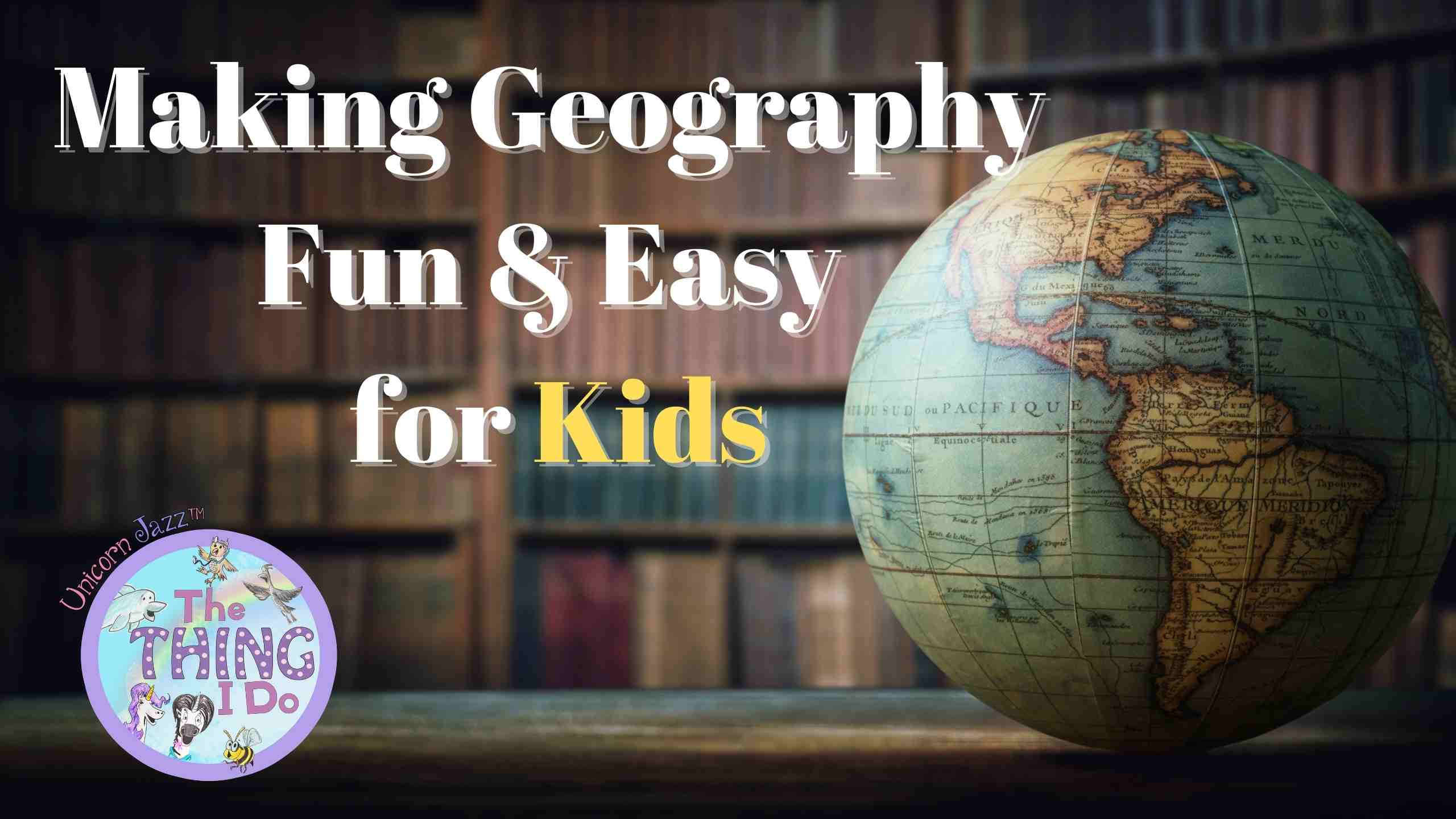Making Geography Fun & Easy for Kids
Making Geography Fun in our small world. It can still be a pretty big place! This can be especially true to our young kids learning about global geography and international places throughout our planet.
Unlike other academic and practical skills, mastering geography isn’t something that comes to children naturally. That is why, as parents and educators, it is our job and responsibility to teach and help how to locate the many countries throughout our wonderful world (and their capitals too!)

Where in the World Are You in Comparison to Unicorn Jazz Headquarters in California?
Making Geography Fun
There are much better ways to help kids remember their geography than repeatedly pointing to an outline of a country and asking which one it is. Kids simply need more to their routine than just a color-coded visual to retain such broad knowledge. After all, there are so many things that define the individual regions which make up our world than just the shape of their borders.
How to Make Geography Memorable
The best way to do is this is by adding an element of intercultural education by asking questions and introducing material about each region that interests them personally.

Making Geography Fun with Food
Does your kid have a favorite dish or fruit or candy that they like to eat? Of course they do! Kids love all things food, so centering their geography around the topic of edibles is a no-brainer.
Examples of questions related to food can be:
- Which country did pizza come from?
- Which countries produce and export the most chocolate?
- Which country produces the most orange juice? What about sugar? Or salt?

Making Geography Fun & Enjoyable with Animals, Plants, Mountains & Landmarks!
Flora and Fauna
Places where only certain animals and plants are indigenous to can also be a great focusing point. When it comes to animals and wildlife, you can ask questions such as, “Where can hammerhead sharks be found? What about penguins or elephants? Or the natural habitat of their favorite animal?”.
The same can be done for the many plants throughout our planet as well. Examples of some floricultural questions may be:
- Where do cherry blossoms grow?
- Where can the lotus flower be found?
- Where do sunflowers bloom best?
- What are your favorite flowers and plants, and where do they blossom in nature?

Current Wonders of The World
Children can also learn to easily identify countries based on what current landmarks they hold. Examples of these sorts of questions can be:
- Which country is home to the Burj Khalifa, the world’s tallest building?
- Where is Mount Everest located? What about Mt. Rushmore?
- Which U.S. states make up the Appalachian Mountains?
Significant Events
For kids aged 7 and up, begin introducing questions related to a country’s government and history, such as:
- Where did WWII begin?
- Where was Gandhi from?
- Which territories did the Mayans and Aztecs inhabit?
- Which European countries did the Vikings come from? Which places did they conquer and settle in?
Moving Up in the World
Once they have a grasp of where things are, you can start asking more advanced region-specific questions, including:
- Which countries speak English as their official language? How about Spanish?
- Identify the 13 French-owned overseas territories throughout the globe.
- Which countries make up the coast of the Caspian Sea? What about the Baltic Sea and the Mediterranean?
Take a Tour Around the Earth from Home
Amazing virtual resources such as Google Earth and online visits to many international places are available for anyone to use. Be sure to take advantage of these opportunities as a way to showcase life around the globe to your kids and students, including its wonderfully diverse nature and architecture!


